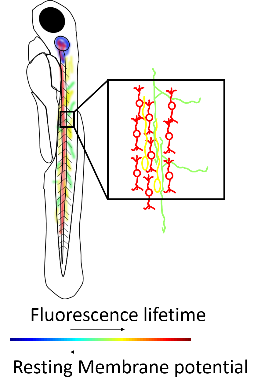We have three new student projects at The Brinks Lab where we develop tools with roots in physics, biochemistry, optics, mathematics and nanofabrication and we're interested in how brain cells work on every level, from biophysical principles to consequences in behavior and from subcellular compartments to complete organisms. Our lab is in its startup phase and we will have exciting projects that offer one or a combination of the following activities: Optical engineering, mechanical engineering, genetic engineering, nanoengineering; programming; cell culturing and imaging.
- Membrane Voltage Nanoscopy
To optically read out membrane voltage from subcellular components like dendritic spines, we will use plasmonic enhancement of the fluorescence of a voltage sensitive protein. In this project, we will design plasmonic nanoantennas to enhance the fluorescence of a specific voltage sensor, fabricate samples of these antennas and culture cells on them expressing the voltage sensing protein, to test the premise of plasmonic enhancement of voltage sensitive fluorescence. - A compact multimodal two-photon microscope
Optogenetics allows for perturbation of cell signaling with fine spatial and temporal resolution. A good optogenetic microscope is a flexible instrument that does not only allow two-photon deep tissue imaging, but also multimodal perturbation. This puts constraints on miniaturization and fabrication on these devices. In this project, we will work on the design of a miniaturized version of a multimodal 2Pmicroscope.
- Absolute voltage imaging
Absolute voltage imaging would allow new applications of optical voltage detection in for instance developmental biology. In this project, we will work on encoding membrane voltage in the fluorescence lifetime of a voltage sensors. We will create a new family of Förster Resonance Energy Transfer – based Genetically encoded voltage indicators and test their brightness and voltage sensitivity.
More information or addtional questions? Please contact Dr. Ir. Daan Brinks

